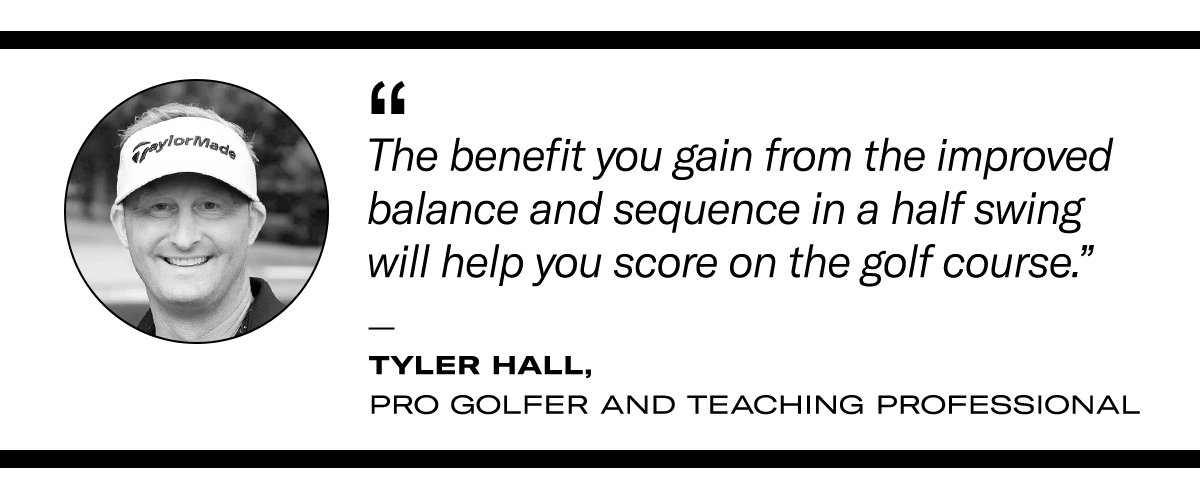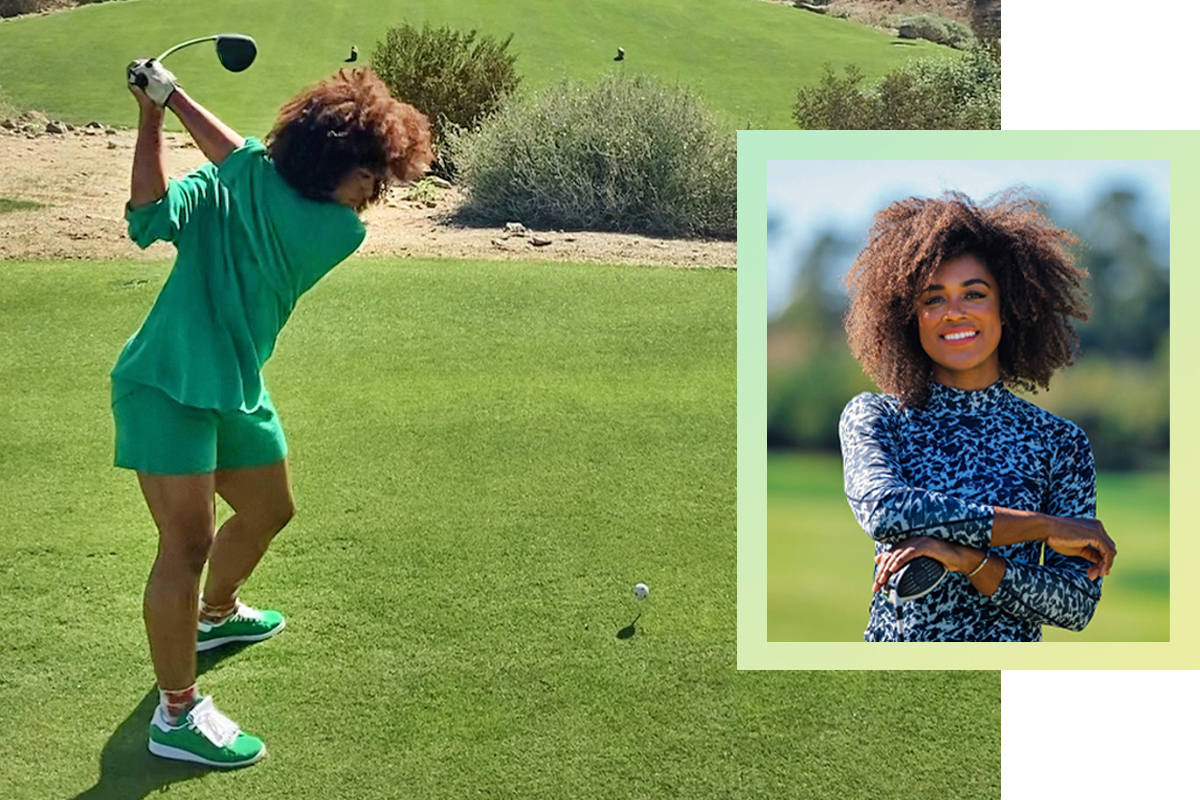Golf professional Tyler Hall shares how shortening swing length can improve control and accuracy for better performance.

There are a lot of things that happen from the time you peel your golf club back to the moment the head makes contact with the ball. Simplifying or shortening your swing length with a half swing can be key to finding the most important element to your game: consistency.
Tyler Hall is both a pro golfer and a teaching professional, and he considers the half swing to be such an integral part of his own golf game that he encourages all of his students to add it to theirs. Mastering the half swing, which tops out around belt-high, can lead to better ball contact and better control of your shots, which will shave strokes off of your score.
“The half swing is the building block to the full swing,” he says. “And, there are so many benefits to taking it out onto the golf course and actually playing with that kind of condensed motion.” Here are five reasons to add this useful shot to your repertoire.
The Half Swing is Fundamental
Sequencing is so important in the golf swing, and nothing is more useful to learning the proper kinematic sequence than the half swing. “It keeps you so connected, and it’s a way to sync everything up,” Hall says. Flaws are compounded in the full swing, so dialing it back can help amateur golfers whose arms and hands are surging ahead of their body, or whose bodies outrace their arms and hands.
It’s Simple to Learn
Hall says amateur golfers who don’t have time to hit 1,000 practice balls per week can greatly benefit from learning a swing that hits all of the necessary Xs and Os, rather than trying to imitate the swing of a professional. Think about your golf swing as a clock, with 12:00 above your head and 6:00 at your feet. When you make a half swing, your club will stop at 9:00 on your backswing and 3:00 on your follow-through.
Hall suggests thinking about keeping the club centered on the midline of your body and rotating your hips and shoulders to move the club, without hinging the wrists or breaking the elbows. Once you get the feel of the motion and can do it with control, you can incorporate some wrist hinge. “It’s like painting a semi-circle from waist-high to waist-high,” he explains.
You’ll Make Better Contact
It’s logical that when you make a smaller swing, fewer things can go wrong. The motion is very controllable, so it’s easier to gain more of an awareness of where the club face is and make better contact. Hall suggests watching professional golfers swing, and paying special attention to what they look like through the impact zone.
“If you only saw a snapshot of their lower bodies and where the club is at impact, it would be very difficult to differentiate one pro from the next, because everyone needs to be in the same place through that money slot,” Hall says. But when you look at their full swings, they look very different. Practicing the half swing allows you to work specifically on your positioning through the impact zone, which is when it matters most.

The Ball Might Actually Go Farther
Because a square, solid hit always delivers more distance and power than a mis-hit, you might actually notice the shots you take with a half swing going farther than ones you take with a full swing. Hall compares it to martial arts legend Bruce Lee and his one-inch punch. “When he restricts the length of his punch swing, he has to use every ounce of his torque and power to deliver a knockout punch from an inch away, and the half swing is the same idea,” Hall says. “You gain the benefits of proper positioning and can often generate more speed and power than you can with a full swing.”
It Gives You Options
Scoring on the golf course is done with the irons, and Hall seldom wants his players hitting full irons, because shots made with a half-swing are so much easier to control. “The benefit you gain from the improved balance and sequence in a half swing will help you score on the golf course,” Hall says. He suggests clubbing up and taking less of a swing rather than taking a full swing with less club. “Why max out an 8 iron, and risk all kinds of excess spin, when you have a 7 iron in your bag?” he says. “There’s no reason to bring more variables into play.” You can also use a half swing with a longer iron or fairway wood to produce a low, penetrating shot that will run out in the fairway, or to reduce flight when you need to get under a tree.


